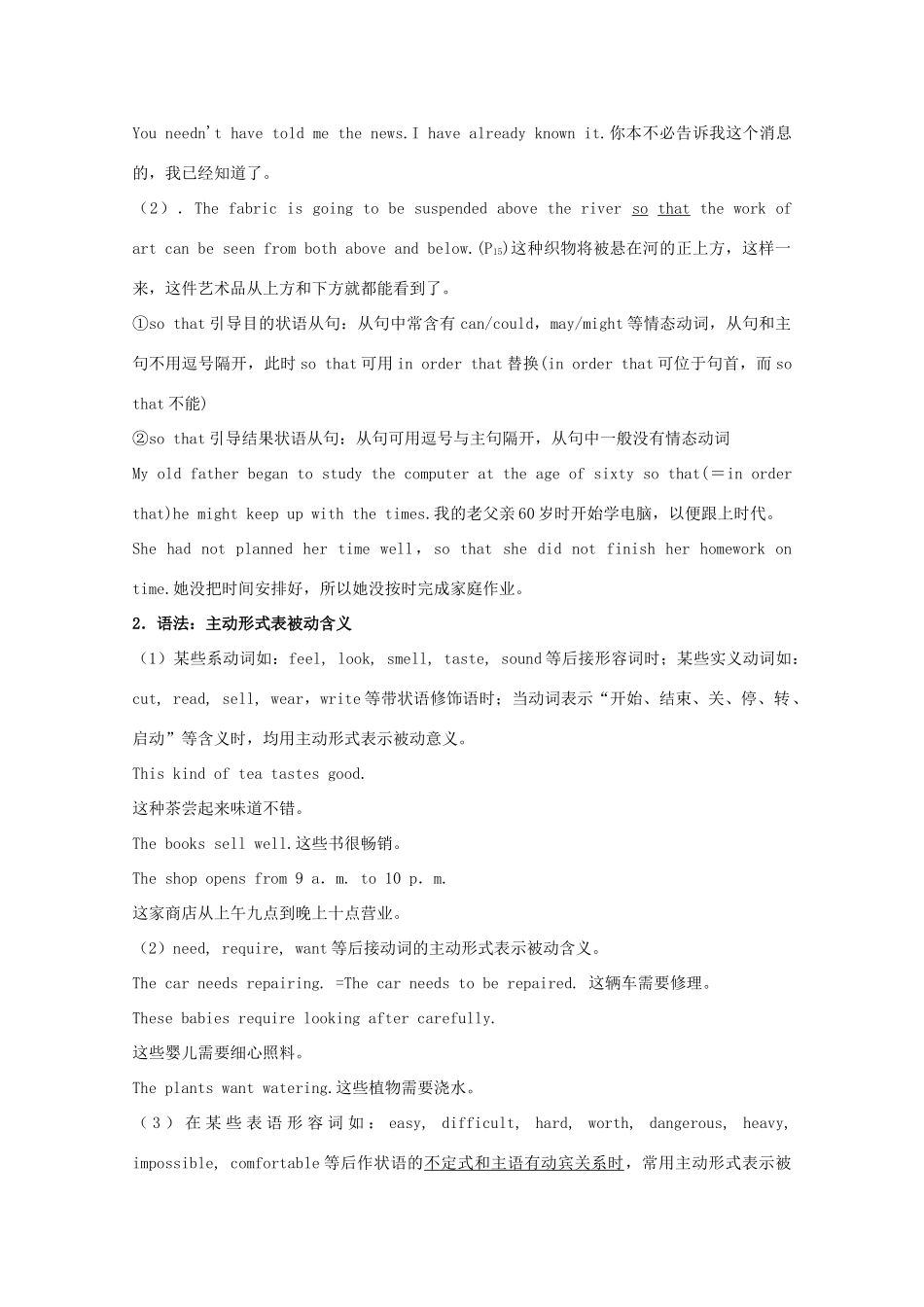Unit22 Environmental Protection Language AwarenessUnit22 Environmental Protection Language AwarenessLearning Aims:(学习目标)1.掌握情态动词+have done 的用法。2.so that 引导的目的状语从句.3.动词主动形式表示被动含义的用法.(重难点)Step1:Revision(知识回顾)被动语态的基本构成。Step2: Check preview(检查预习)Step3:Lead—In(导入)Turn to page 15.Step4:Self-study and Cooperation(自主学习与合作探究)1.Read the following sentences and pay attention to the underlined part.(1).Many people thought that permission wouldn't be given,and some thought the project should never have been allowed.(P15)许多人认为不会得到许可,也有一些人认为这项工程本来就不该被允许。归纳拓展:“情态动词+have done”结构:①must have done 用于肯定句,表示“(过去)一定做了某事”。②can't have done 表示“不可能做了某事”,用于对过去的否定情况把握较大的推测。③could have done 表示“本能做某事(而实际上没做)”。④might have done a.表示对过去发生的事情的推测,意思是“也许已经做了某事,可能已经做了某事”;b.表示责备、惋惜之情,意为“本可以做某事(而事实上没做)”。⑤needn't have done 表示“本不必做某事(而实际上做了)”。例句:You must have seen the film Les Choristes.你肯定看过电影《放牛班的春天》。Mr.Smith can't have gone to Beijing,for I saw him in the library just now.史密斯先生不可能去北京了,因为我刚才在图书馆看见他了。He could have passed the exam,but he was too careless.本来他能够通过考试的,但是他太粗心了。You may have read about it in the newspapers.你可能已经在报上看过这个消息了。You needn't have told me the news.I have already known it.你本不必告诉我这个消息的,我已经知道了。(2).The fabric is going to be suspended above the river so that the work of art can be seen from both above and below.(P15)这种织物将被悬在河的正上方,这样一来,这件艺术品从上方和下方就都能看到了。①so that 引导目的状语从句:从句中常含有 can/could,may/might 等情态动词,从句和主句不用逗...


